Master's Thesis
Solving Complex Problems Collaboratively
The role of design in inter- and transdisciplinary teams
referring to climate resilient urban design.
Challenge
Citizens should be involved in climate resilient urban design processes. Therefore, a tool has to be designed to ensure the collaboration of the interdisciplinary team with different knowledge backgrounds.
Targets
The master’s thesis examines the competencies and course of actions of design in order to find out its role within inter- and transdisciplinary teams referring to climate resilient urban planning. The underlying assumption is that design provides support in this context.
Concept
The result is an operating concept of a multi-touch table which makes designers’ procedures intuitively applicable for its multidisciplinary stakeholders group. In a nutshell these are making the argumentative process transparent, following up an iterative procedure, reflecting the details and the overall topic continuously and using visualizations as well as models to guarantee common understanding. Hence the touch table provides the team in collaborative decision making of complex problems.
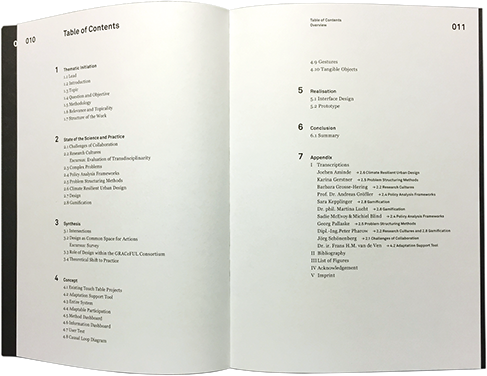
Realization
The operating concept is divided into three main categories. »Information« displays various maps which contain different types of information. These can be discussed with the whole group. All maps resent the current state of the specific area. A selection has to be made in order to see the map on the common screen. The menu »Planning« is onnected with seven tangible objects. These serve as drawing and selection tools in the map and symbolise various adaptation solution measures. A new entry is created automatically – as a visualization in the map and as a graphic in the individuals’ screens – using a measure tool. Hence voting and discussion are fostered. Through its playful and reduced approach it is much more comprehensible for non-experts. »Impacts« is connected with the planning actions. A part of the underlying Causal Loop Diagram is visible here in order to avoid information overload. The diagram only shows the direct consequences of the current implemented measures.
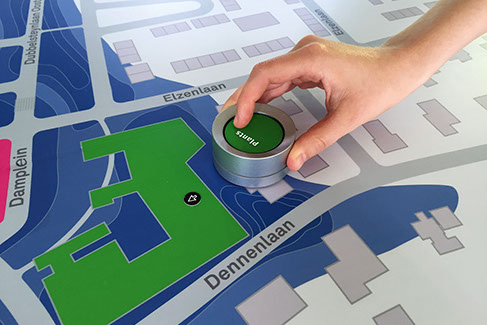
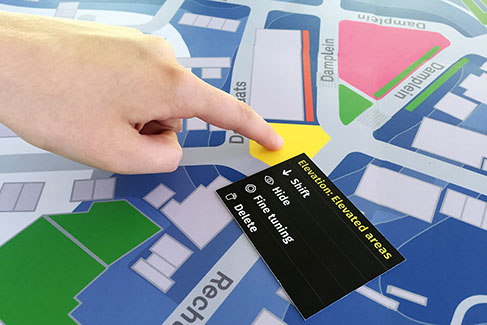
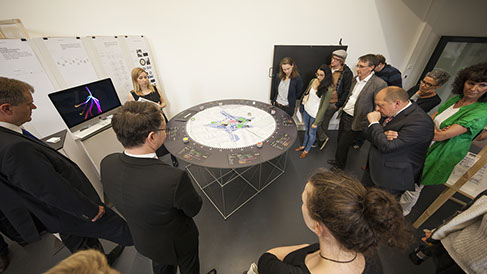
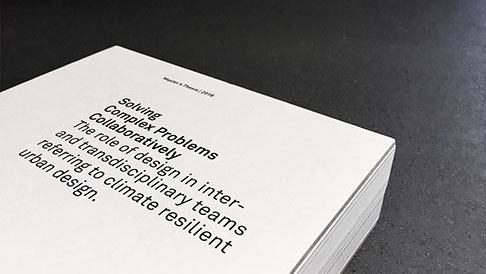


















9 - 9
<
>
HfG Schwäbisch Gmünd, 3rd term 2016 (MA), master's thesis
Supervisors: Dr. Georg Fuchs, Prof. Ulrich Schendzielorz, Prof. David Oswald